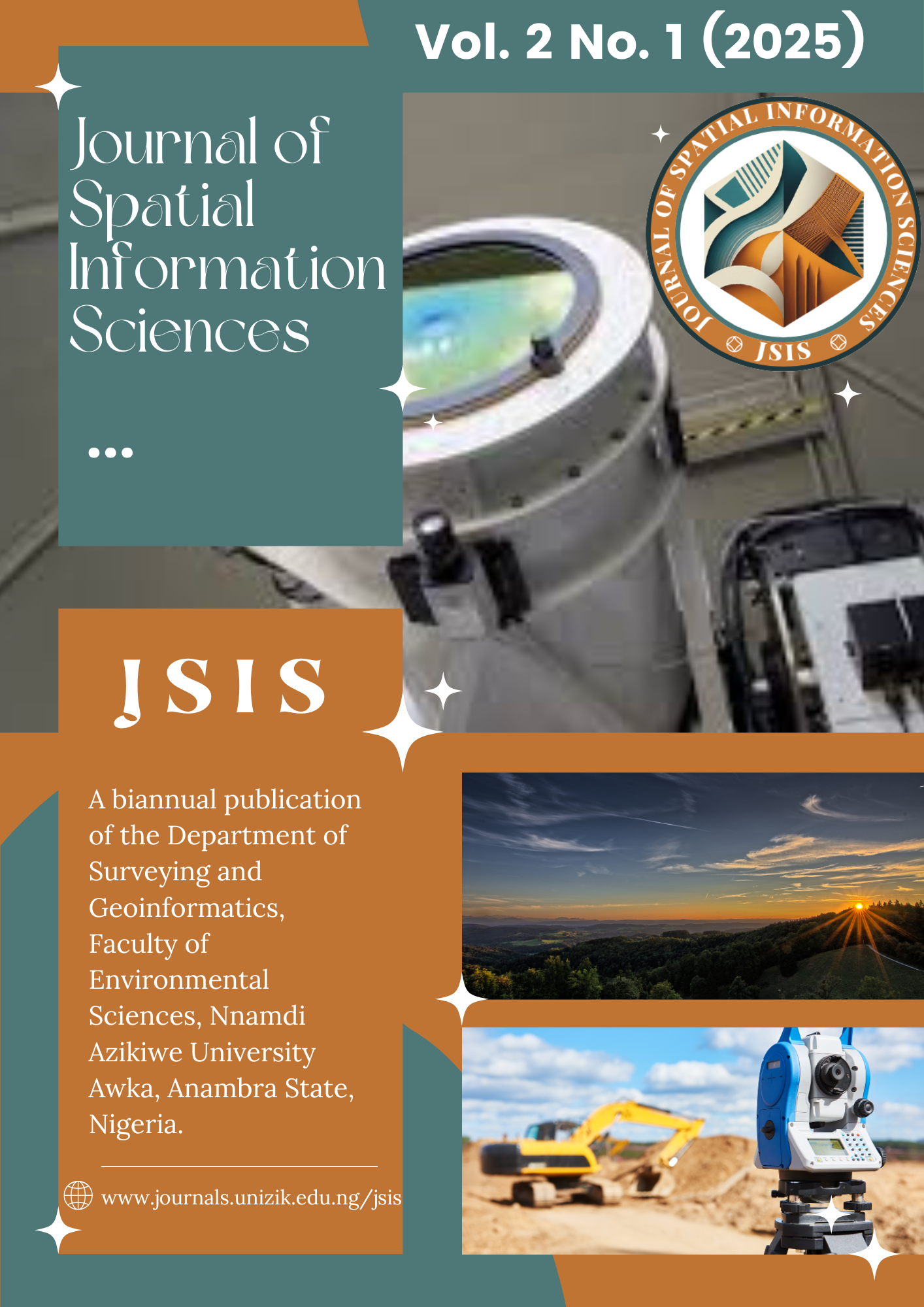Comparative Site Suitability Analysis for Solar Photovoltaic Plant Using Fuzzy Overlay and AHP Models in Ondo West LGA, Nigeria
DOI:
https://doi.org/10.5281/zenodo.14948062Keywords:
AHP, Fuzzy overlay, Geographic Information Systems, Multi-criteria decision analysis, Renewable energy, Site selectionAbstract
Integrating renewable energy sources is essential for sustainable development and addressing inconsistencies in power supply. This study evaluates and compares the Fuzzy Overlay and Analytic Hierarchy Process (AHP) models for siting a solar photovoltaic (PV) plant in Ondo West LGA, Nigeria. Five key criteria influencing optimal solar energy generation were considered: solar irradiance, slope, land use/land cover, proximity to transmission lines, and proximity to road networks. The study utilised solar global horizontal irradiance (GHI) data, a digital elevation model (DEM), Landsat 8 imagery, power grid data, and road network data. Geographic Information Systems (GIS), remote sensing, and multi-criteria decision-making (MCDM) techniques were applied to assess solar resources, topography, land use, accessibility, and infrastructure. The northeastern region of the study area is the most suitable area for siting Solar PV plant. The Fuzzy Overlay model identified a highly suitable area of 2,017.42 ha, while the AHP model indicated 3,239.61 ha. Statistical analysis (t-test, α = 0.05) revealed no significant difference between the two models. However, Fuzzy MCDM is less influenced by subjective weighting, making it more effective in refining highly suitable areas. The study provides critical spatial insights to support strategic planning and decision-making in optimising solar PV deployment for enhanced energy sustainability.
Downloads
Published
Issue
Section
License

This work is licensed under a Creative Commons Attribution-ShareAlike 4.0 International License.





